Civilization III: Play the World Updated Preview
This expansion to Sid Meier's latest Civilization game aims to revolutionize turn-based multiplayer gaming without forgetting single-player.
See it in Action!
It's really all about multiplayer with the Civilization III expansion, Play the World. The expansion aims to transform the stagnant world of turn-based multiplayer into an experience that is quick, fast-paced, manageable, exciting, and exhilarating, where you don't have to wait seemingly forever for others to move, and where you don't have to play for dozens of hours to finish a game. Famed Civilization designer Sid Meier and his team at Firaxis weren't content just to add traditional multiplayer--they aimed to revolutionize it. In Play the World, games of Civilization can progress at the clip of a real-time strategy game--thanks to five new multiplayer victory conditions aimed at shortening game length; options like accelerated production that cut build, growth, and research times in half; and a turnless multiplayer mode where all players move units at once. What's more is that these multiplayer additions don't just take Civilization III online, but they redefine Civilization strategy in the process.
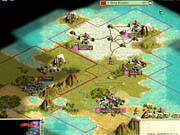
The revolutionary new turnless multiplayer mode is arguably Play the World's biggest attraction, as it creates what is in essence a real-time multiplayer mode in a turn-based game. Turnless mode accomplishes this feat by using a turn clock, which tracks the progression of time through a timed cycle. After you move a unit, you must wait for the turn clock to return to the same point in the cycle before you can move your unit again. But because you are moving units at any point in the cycle and then returning to them one revolution later, it's actually very fluid.
Since we last previewed Play the World, we were able to play with the new turnless mode long and hard to see how it really works. From our time with it, we've found that it is as simple as it is elegant. You'll find that by the time you're ready to return to a unit, it'll likely be waiting for new orders, and since each player moves at the same time in turnless mode, there is virtually no waiting--a truly remarkable feat for the genre. With each person moving units at various points in the turn cycle, enemy units will almost never remain right where they are for long. Instead of being able to plan moves based on a static world, you'll need to use strategies from real-time strategy games to account for the new real-time nature of turnless mode.
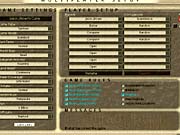
The foundation of the turn-based gameplay remains the same, though, even with the incorporation of real-time elements. The rest of the game mechanics function roughly the same as they would in normal turn-based mode, but they adhere to the turn-clock guide. For example, cities still add shields to production in one lump at the beginning of the turn, and civil disorder still remains until the end of a turn has been reached. The gameplay is still turn-based at its core--units still move step-by-step, and production is completed one chunk at a time--but because your units and your enemy's units are all moving at different times, it feels continuous, unlike traditional turn-based multiplayer gameplay.
The turn clock is a variable period of time that lengthens so that one turn takes much more time to cycle through the later in the game you go. For example, it may take 10 seconds for the clock to cycle one revolution early in the game, but it might take a minute for it to cycle one revolution later in the game. The more advanced your civilization becomes, the more pieces of the puzzle you'll have to worry about moving in each turn cycle, and so more time is allotted. The time adjustment takes place invisibly in the background, and it's balanced well enough that at any point you'll usually have just enough to do to consistently be busy, but not too little that you're waiting for units to activate. You can also set whether you want the turn clock to run fast, normal, or slow turns, allowing respectively a small amount of time, a normal amount of time, or plenty of time for each revolution, keeping the game suited for all manner of play. For easy reference, the turn clock, seen as an ever-refilling bar, is visible at the top left of the screen.
Multiplayer for the Masses
Diplomacy in turnless mode is handled in real time between players, and the world doesn't stop while you negotiate. Hailing a fellow player in multiplayer is accomplished in the same manner as in regular Civilization--through the foreign advisor--but if the other player is in a special menu or screen, such as when he's busy managing a city, you will be told that he is unreachable at that moment. Even when available, the invited player has the choice of whether to enter diplomacy or not.
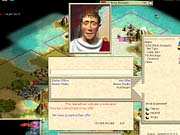
The multiplayer diplomacy menu looks nearly identical to its single-player counterpart, and you can offer various technologies, treaties, and most anything else you would expect. You can even set the expression of your leader's portrait as seen by the other player. Firaxis also told us of some rather humorous tactics involving diplomacy as misdirection. In one strategy, at the moment you would begin a real-time attack against an opponent in turnless mode, you can distract the opponent by continually asking for a diplomatic meeting, which pops up a dialogue box, and the opponent must decline the invitation each time. Of course, nations do just this in the real world, attempting to flood diplomatic channels to tie up the nation's government. Furthermore, you can ally with other players and strategically split the technology tree so that each of you develops what the other is not, which gives the team an advantage once they share the technology with each other.
What is unfortunate, though, is that you can't pick what you're interested in from the other player during diplomatic negotiations. In fact, you're unable to see what would be the other player's side of the diplomatic screen, as you can in single-player. Instead of picking what you desire, you'll need to type out what you're looking for and chat the old-fashioned way. But in a heated multiplayer game where the turn clock is ticking, it isn't always convenient to have to spell it all out, nor is there any way even to know what's available without specifically asking the other player.
Other multiplayer modes are decidedly more traditional, but they are included for good measure, and some with good reason. Simultaneous-move mode, specifically, serves to fill one gap in turnless mode--the ability to include AI-controlled civilizations in multiplayer. Turnless mode cannot include any computer opponents, whereas computers can be added in simultaneous-move mode. Simultaneous-move mode is different and fun in its own right, and in it players move--you guessed it--at the same time. There is a turn clock in simultaneous-move mode as well, and you have one clock cycle to conduct your turn. If both human players finish early, the turn ends and continues to the next without further waiting. But the ability to include AI opponents makes those of us who prefer to ally with friends rather than destroy them very happy--this way, there's someone else to gang up on, and the game is still remarkably fast-paced, even if the method isn't as revolutionary.
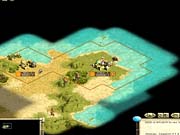
To give the game a further boost in every mode there is the option of accelerated production. Accelerated production halves the cost of all units, effectively doubling the build rate, and it greatly increases the speed at which cities grow and research is conducted. In other words, accelerated production doubles the speed at which the game progresses, without creating much hassle. If all of these methods don't speed the game up enough to your desires, you can save multiplayer games for future resumption. We found that, surprisingly, the save system works well enough that if the game crashes on one player, even the host, the remaining players can save the game after the crashed player leaves. The game can then be restarted from any player's computer, and for us, somehow each player found himself back automatically with his correct civilization upon resumption.
When new game modes like turnless mode are used in tandem with new victory conditions, Civilization III games run fast and furious, with full, satisfying games lasting anywhere between half an hour and several hours, but nowhere close to the day-long marathons required for traditional turn-based multiplayer. To help foster these lightning-quick multiplayer games, you can pick from any of the game's five new victory conditions, which are all aimed at giving succinct, quick objectives. The five new victory conditions are elimination, regicide, mass regicide, victory point locations, and capture the princess. In elimination, once you lose any city to an opponent, you lose the game. Games using elimination are quick and frenzied, two words almost never hitherto associated with turn-based gaming--you'll have to react quickly and reach some balance between defending all of your cities strategically and attacking to keep your enemies at bay. You can't use the same method and expansionist strategies you might have used in the original Civilization III, because all of a sudden, the larger your kingdom, the easier it is to die. This type of strategy is wholly new to Civilization--never before was the placement of each city and each terrain-based defensive structure or unit fortification so important to victory or death.
World Included
It's a similar story with the regicide victory condition, where you'll start the game with a king unit, like Abe Lincoln for the Americans. Once you lose the king, you lose the game. But the king units have the alluring ability to move two squares per turn, making them ideal scouts. Firaxis told us that a common strategy they observed was players attempting to gain an early advantage by using the king units to scout the map and to collect goodie huts. If you play it safe, you could potentially be losing time in exploration and losing the bonuses goodie huts provide. But by playing it safe you don't run the chance of stumbling across barbarians or accidentally finding an enemy civilization and losing the game when they trounce your defenseless king. Having such a risky unit adds an entirely new element of stress to what was previously a mellow game--now it can all end in one moment, if you're not extra careful. Mass regicide is closely related, with the only difference being that you start with multiple king units, which allows for a slightly longer game.
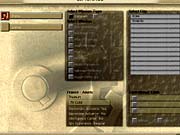
The other new game modes, victory point location and capture the princess, are structured in a similar manner but are based on the accumulation of points. In victory point location, you attempt to control various points on the map. The longer you control them, the more points you accumulate. In essence, this mode is much like Unreal Tournament's domination mode. Capture the princess is nearly the reverse of regicide. Each civilization starts with a princess, and instead of aiming to kill your opponent's princess, you try to capture her and bring her to your own capital. The longer you hold the princess, the more points you'll receive.
There are also myriad new interface improvements to help you get as much done as quickly as possible in the consistently rushed, hectic multiplayer games. Since our last preview of the game, the most notable addition has been the new espionage screen. The espionage screen compiles all intelligence operations into one place, easily accessible with the E hotkey. Now, from one screen you can establish and track embassies, engage in covert missions, and even pick where the missions will take place. All pertinent options and settings for all of these missions are in the new espionage screen instead of being spread throughout the game with no central location.
Firaxis has also included a full map editor with new terrain sets and unit packs to bolster fan-made content. The map editor is simple and lets you construct custom maps. For example, many fans have already created maps of the earth. These fan creations are included in Play the World, and they allow players of the expansion to, literally, play the world. There are also new unit packs available, which will include traditional units from eras like feudal Japan or World War II for use in fan-made scenarios. Some of the new terrain sets are also quite interesting and provide a nice change of pace--especially the included warpstorm watercolor terrain, which transforms the Civilization gameworld into a virtual watercolor painting. The warpstorm watercolor terrain, along with other sets like winter terrain and European terrain, can be loaded in the same manner as a scenario into multiplayer or single-player games, and they are included with the expansion in the scenarios folder.
There are a few elements we'd still love to see added to Play the World, the most notable being a pause feature. If there was one, it managed to elude us, though it seems there should be a way to pause a game to take a breather if real life interrupts with a phone call or bathroom need.
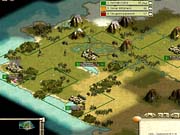
Don't think single-player has been forgotten, though. All of the new interface additions--from the espionage screen and the stack movement buttons to the auto-bombard feature--appear in single-player games, as do the victory conditions, new civilizations, new units, new technology, the new wonder, and the new city and terrain improvements. These additions were all covered at great length in our earlier preview, available in our previous coverage of the expansion.
Suffice it to say, there's likely something for everyone in Play the World, and though the focus is decidedly on multiplayer games, single-player games benefit from virtually all of the new additions as well. With the game due out at the end of the month, you won't have long to wait, either.
Got a news tip or want to contact us directly? Email news@gamespot.com
Join the conversation